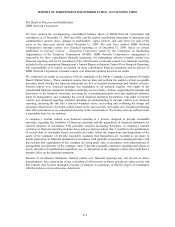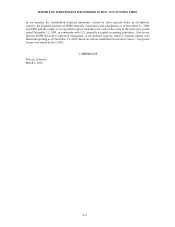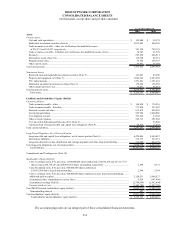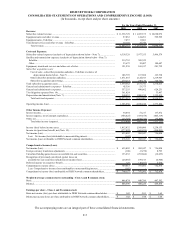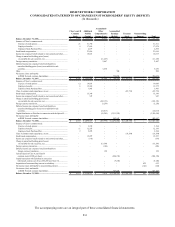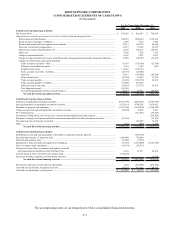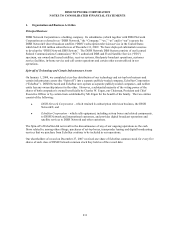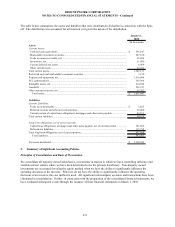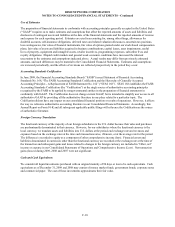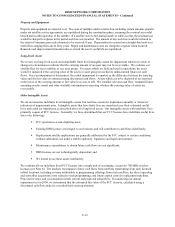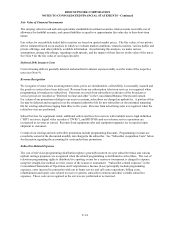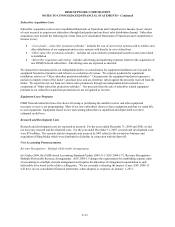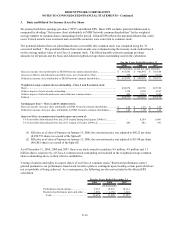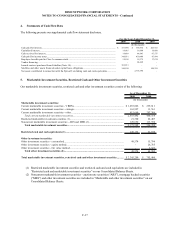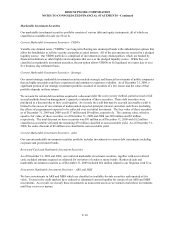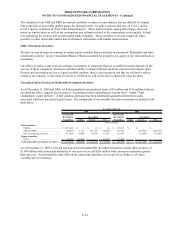Dish Network 2009 Annual Report Download - page 100
Download and view the complete annual report
Please find page 100 of the 2009 Dish Network annual report below. You can navigate through the pages in the report by either clicking on the pages listed below, or by using the keyword search tool below to find specific information within the annual report.DISH NETWORK CORPORATION
NOTES TO CONSOLIDATED FINANCIAL STATEMENTS - Continued
F-10
Use of Estimates
The preparation of financial statements in conformity with accounting principles generally accepted in the United States
(“GAAP”) requires us to make estimates and assumptions that affect the reported amounts of assets and liabilities and
disclosure of contingent assets and liabilities at the date of the financial statements and the reported amounts of revenue
and expense for each reporting period. Estimates are used in accounting for, among other things, allowances for
doubtful accounts, self-insurance obligations, deferred taxes and related valuation allowances, uncertain tax positions,
loss contingencies, fair value of financial instruments, fair value of options granted under our stock-based compensation
plans, fair value of assets and liabilities acquired in business combinations, capital leases, asset impairments, useful
lives of property, equipment and intangible assets, retailer incentives, programming expenses, subscriber lives and
royalty obligations. Illiquid credit markets and general weak economic conditions have increased the inherent
uncertainty in the estimates and assumptions indicated above. Actual results may differ from previously estimated
amounts, and such differences may be material to the Consolidated Financial Statements. Estimates and assumptions
are reviewed periodically, and the effects of revisions are reflected prospectively in the period they occur.
Accounting Standards Codification
In June 2009, the Financial Accounting Standards Board (“FASB”) issued Statement of Financial Accounting
Standards No. 168, “The FASB Accounting Standards Codification and the Hierarchy of Generally Accepted
Accounting Principles - A Replacement of FASB Statement No. 162” (“SFAS 168”). SFAS 168 establishes the FASB
Accounting Standards Codification (the “Codification”) as the single source of authoritative accounting principles
recognized by the FASB to be applied by nongovernmental entities in the preparation of financial statements in
conformity with GAAP. The Codification does not change current GAAP, but is intended to simplify user access to all
authoritative GAAP by providing all the authoritative literature in one place related to a particular topic. The
Codification did not have any impact on our consolidated financial position or results of operations. However, it affects
the way we reference authoritative accounting literature in our Consolidated Financial Statements. Accordingly, this
Annual Report on Form 10-K and all subsequent applicable public filings will reference the Codification as the source
of authoritative literature.
Foreign Currency Translation
The functional currency of the majority of our foreign subsidiaries is the U.S. dollar because their sales and purchases
are predominantly denominated in that currency. However, for our subsidiaries where the functional currency is the
local currency, we translate assets and liabilities into U.S. dollars at the period-end exchange rate and revenues and
expenses based on the exchange rates at the time such transactions arise, if known, or at the average rate for the period.
The difference is recorded to equity as a component of other comprehensive income (loss). Financial assets and
liabilities denominated in currencies other than the functional currency are recorded at the exchange rate at the time of
the transaction and subsequent gains and losses related to changes in the foreign currency are included in “Other, net”
income or expense in our Consolidated Statements of Operations and Comprehensive Income (Loss). Net transaction
gains (losses) during 2009, 2008 and 2007 were not significant.
Cash and Cash Equivalents
We consider all liquid investments purchased with an original maturity of 90 days or less to be cash equivalents. Cash
equivalents as of December 31, 2009 and 2008 may consist of money market funds, government bonds, corporate notes
and commercial paper. The cost of these investments approximates their fair value.




